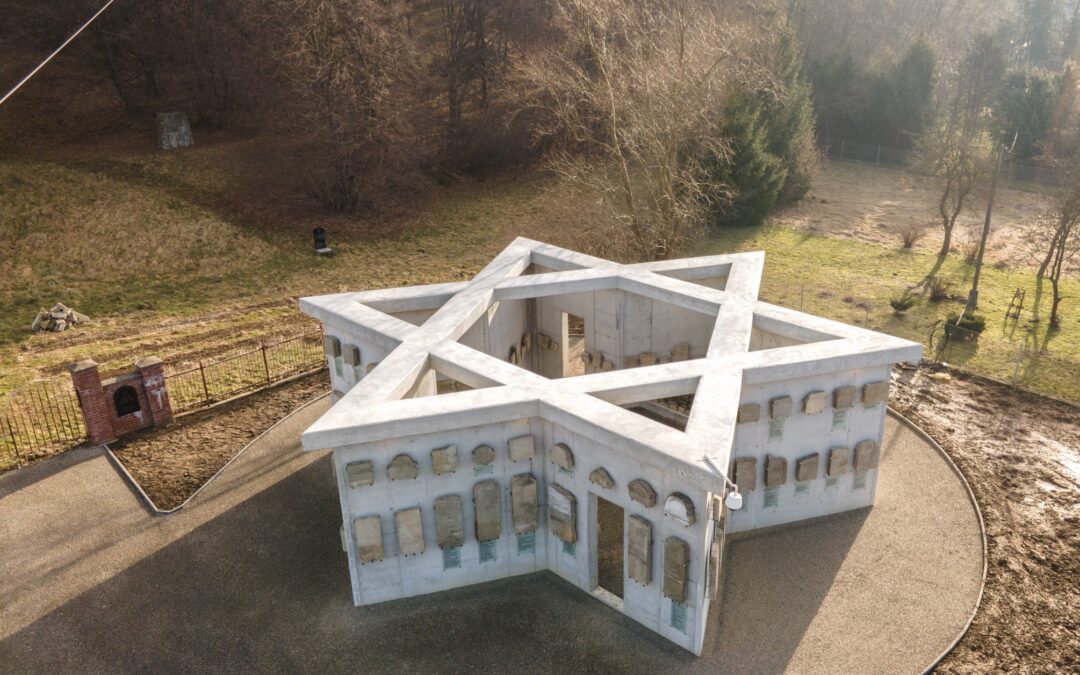A Polish town has erected a memorial to the Jews that made up almost half of its population before bring wiped out in the Holocaust. The monument is part of a broader local project on Jewish history funded by the local authorities and Poland’s foreign ministry.
The new memorial in Gorlice, a town of 30,000 in southern Poland, is located in front of the Jewish cemetery, which was itself a site of executions of Jews by the German Nazi occupiers during World War Two.
The monument, built in the shape of a Star of David, features fragments of matzevot, Jewish headstones, that were in 2015 excavated from under the floor of a former synagogue in the town, reports the Polish Press Agency (PAP).
“[This] is a place of remembrance of our neighbours, acquaintances, friends, people who have irretrievably disappeared from Gorlice,” said the town’s mayor, Rafał Kukla, quoted by PAP. “A place created so that the memory of our common history and the terrible events of World War Two will never perish.”
“It is also a history lesson that once almost half of the inhabitants of our city were of Jewish origin, and today they are not here anymore, and there are not many traces of them left,” the mayor added.
Before the war, Gorlice had a thriving Jewish community, including many successful businesses and a flourishing intelligentsia. The late 19th century saw some anti-Jewish riots. But, compared to other towns in the region, conditions for Jews in Gorlice “were very favourable”, notes Virtual Shtetl, a website run by the Museum of the History of Polish Jews.
After the German invasion in September 1939, Jews in Gorlice – like in the rest of occupied Poland – found themselves in ever-worsening conditions. Many were used as forced labour, and from 1941 the community was required to live in a ghetto created in the town.
The following year, the liquidation of that ghetto began, with some Jews murdered in Gorlice itself and others sent to the gas chambers of Bełżec. It is believed that, from a pre-war population of 4,500-5,000 Jews, only 200 survived the Holocaust.
After the war, around 30 Jewish families returned to the town, but many of those later emigrated, mainly to Israel, notes Virtual Shtetl.
In 1995, the town’s Jewish cemetery was cleaned up and a new fence was erected around it. In 2012, a plaque honouring the murdered Jewish community was installed at another former synagogue, and in 2016 an ohel (a structure built around a Jewish grave) at the grave of Rabbi Baruch Halberstam was renovated.
The new monument, which was erected outside the grounds of the cemetery to respect Jewish religious custom, is called “Sidur of the Bystanders – Lantern of the Absent” (a sidur is a Jewish prayer book).
The fragments of Jewish headstones hung around it were recovered ahead of the demolition of a former synagogue in Gorlice in 2015. The mayor expressed satisfaction that they have now found “found a dignified place”, adding that all work was carried out in cooperation with Poland’s Jewish community and the conservator of monuments.
The memorial has been built within the project “Gorlice: Past/Future – Jewish history saved”, which is part-funded with a grant of 105,000 zloty (€23,000) from the Ministry of Foreign Affairs. The town also plans to create a mural, entitled “Traces of the Absent”, that will only be visible when it rains.
Main image credit: Urząd Miejski w Gorlicach (press material)

Daniel Tilles is editor-in-chief of Notes from Poland. He has written on Polish affairs for a wide range of publications, including Foreign Policy, POLITICO Europe, EUobserver and Dziennik Gazeta Prawna.




















